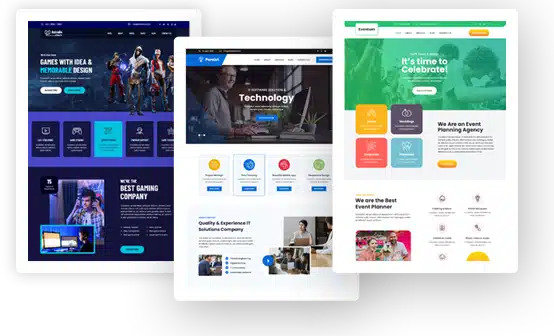HCM Software: Best Practices for Implementation and Use

Have you ever thought about how companies manage hundreds or even thousands of employees with so much ease? The answer is often HCM software. It helps in bringing all HR tasks into one place, making them easy to manage and track. But to get the most out of it, you need to use it the right way from the very beginning.
Why Best Practices Matter in HCM Software
HCM software is a complete system for managing people-related tasks like hiring, payroll, attendance, training, and performance. It can make work faster and more organized for HR teams and managers by streamlining key processes such as issuing online paystubs and managing employee records. But to enjoy all its benefits, the way it is introduced and used is important. A proper plan ensures that everyone in the company understands how to use it and gets value from it.
When HCM software is implemented with care, it helps improve the employee experience, gives better control over HR processes, and supports long-term business growth. It also builds confidence in the system among employees and management.
-
Plan Before You Start
The first step in using hcm software well is to have a clear plan. Understand what your company needs from the software. For example, some may focus more on payroll and attendance management system features, while others may want detailed performance tracking and training modules. By knowing the priorities, you can set up the system in a way that fits your needs perfectly.
-
Involve the Right People
For a smooth setup, it’s good to involve both HR and IT teams, along with managers from different departments. Each group will have different inputs on what they need from the system. This makes the setup complete and useful for everyone. When people feel included in the process, they are more likely to use the system with confidence.
-
Train Everyone Properly
Once the software is ready, employees must know how to use it. Proper training sessions can help them understand how to check payslips, apply for leaves, update personal information, and track performance goals. Integrating qooper.io into the training process can further streamline learning and keep employees engaged while mastering the new software. Simple and clear training ensures no one feels lost and everyone benefits from the system.
Best Practices for Using HCM Software Every Day
Using HCM software is not a one-time setup. It works best when it becomes a regular part of daily work. Employees and managers can get the most from it if they use it consistently and keep the information updated.
When data is entered correctly and regularly, the system can give accurate reports and insights. This helps managers make fair and informed decisions about employee performance, training needs, and workforce planning.
-
Keep Information Updated
An important habit for all users is to keep their data up to date. This includes personal details, qualifications, work achievements, and completed training. Updated data means the system always reflects the real situation, which is helpful for both HR and employees.
-
Use All Available Features
Many companies only use a small part of what HCM software can do. Exploring all the features can bring more benefits. For example, performance tracking tools can help set clear goals, while learning modules can help employees improve their skills. Attendance tracking, leave management, and self-service options also save time for everyone.
-
Review and Improve Regularly
Over time, the needs of a company may change. It’s good to review how the software is being used and make improvements where needed. This can include adding new features, adjusting workflows, or making training available for new employees. To support this process, many organizations also turn to continuous improvement consulting, which offers guidance on optimizing systems and implementing effective training strategies.
How HCM Software Improves Workforce Management
When used well, HCM software changes the way people work. It reduces repetitive tasks for HR teams and gives employees more control over their own information. Managers can focus on planning and decision-making instead of spending time on manual processes.
A clear benefit is transparency. Employees can see their attendance records, leave balances, and performance goals anytime. This builds trust because everything is clear and easy to check.
-
Makes HR Processes Faster
Tasks like leave approvals, payroll processing, and expense claims can be done quickly without multiple approvals through email or paper forms. This saves time for both employees and HR staff.
-
Supports Employee Growth
HCM software is useful for planning training and skill development. Employees can register for training programs, track their progress, and receive feedback directly in the system. This makes learning a natural part of work.
-
Helps Managers Make Better Decisions
With all the data in one place, managers can see patterns and make better plans. For example, they can find out which teams need more staff or which skills are in high demand. This helps in preparing for the future.
Creating a Positive Work Culture with HCM Software
HCM software also plays a role in making the workplace friendly and supportive. When processes are smooth and employees feel their work is tracked fairly, it creates a sense of trust. Everyone knows their efforts are noticed and appreciated.
Employees also like having easy access to information. They can check their details, apply for leaves, and track goals without waiting for HR replies. This independence makes them feel more valued.
-
Encourages Better Communication
The software can provide a space for employees to connect with HR or their managers, ask questions, and get quick answers. This keeps everyone informed and avoids confusion.
-
Builds Confidence in the Company
When employees see that the company invests in tools that make work easier and fairer, it improves their confidence in management. This can lead to higher satisfaction and loyalty.
Final Thoughts
HCM software is a useful tool that can make workforce management simple and effective. But the real value comes from using it the right way from the start and making it part of daily work. Planning carefully, involving the right people, training everyone well, and keeping the system updated are key steps.
When companies follow these best practices, they can enjoy all the benefits HCM software offers—faster processes, better communication, accurate data, and happier employees. In the end, it’s about creating a workplace where everyone has the right tools to succeed and grow together.

